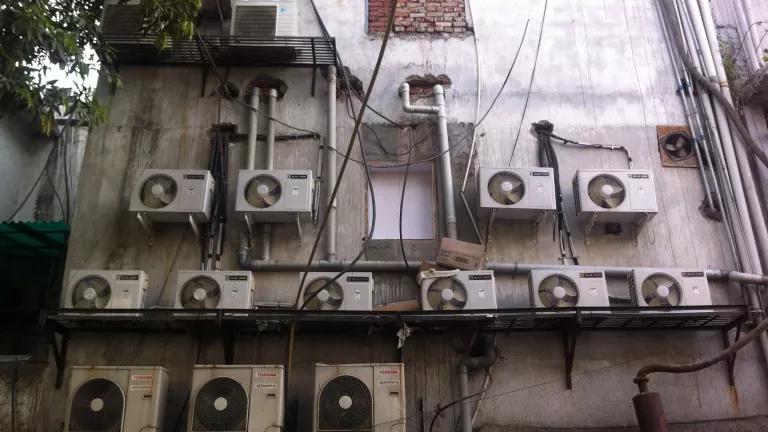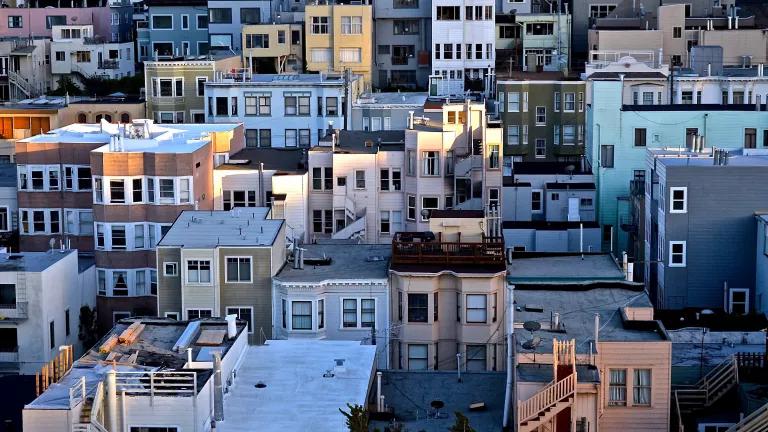The City of Los Angeles celebrated Earth Day this past Friday by adopting an ordinance that will ensure new buildings in Los Angeles use water more efficiently than ever before...making L.A.’s building standards among the strongest in the nation for conserving and reusing water.
Under the outstanding leadership of Los Angeles Department of Building and Safety (DBS) Green Building Chief Osama Younan, a group of stakeholders (including architects, engineers, manufacturers of plumbing products and NRDC) and DBS staff worked for more than a year to develop a set of recommended code changes that will, among other things, require all new buildings in Los Angeles to be designed to reduce potable water use by 20 percent indoors. This must be achieved by installing plumbing fittings and fixtures (i.e. toilets, showerheads, faucets, clothes washers, dishwashers, etc.) that are more efficient than the current building standards require—which are already the most efficient in the country after the California Energy Commission established new product standards in 2015.
The new ordinance is a result of Mayor Eric Garcetti’s October 2014 Executive Directive on Water Conservation to Address the Ongoing Drought, which directed the DBS to “compile and propose to City Council a list of potential building code changes for new and retrofitted buildings.” Other important achievements in this code include:
- All new buildings must be constructed to be “graywater ready” [1]
- Separate water meters for outdoor water use
- Submetering for multi-family and commercial tenant space to record individual usage
- Pool covers for all new residential swimming pools [2]
- Non-potable water must be used for cooling tower make-up water
- Requiring smart hot water design that limits the volume of water delivered to any fixture to 0.6 gallons before hot water arrives.
While these are huge improvements for the City of Los Angeles, there are a couple areas where the newly approved codes could be improved.
- Groundwater Discharge. This ordinance changed the way buildings will handle the discharge of groundwater, which as a typically clean water source was previously required to be pumped to stormwater collection systems. In his Executive Directive, Mayor Garcetti asked that the ordinance require this water to be used onsite; but as adopted, the new code allows for the water to be used onsite or discharged to the sewer. At a minimum, the discharge to sewer option should only have been allowed as an exception for developments where the volume of groundwater pumped onsite was greater than non-potable demand.
- Graywater-ready Buildings. While the new ordinance requires graywater and blackwater to be plumbed separately, for implementation to be effective, the building codes will need to be more specific about things like labeling, signage, and potentially stub-out locations.
As the only environmental advocacy representative in the stakeholder group, NRDC worked to push the boundaries of what was considered possible. And while we didn’t get everything we wanted in this ordinance, it’s fair to say that as adopted, this ordinance is an important step for the City of Los Angeles in meeting the objectives of Mayor Garcetti’s Executive Directive and moving towards a goal of local self-reliance.
With these changes, Los Angeles is once again establishing itself as an environmental leader and we look forward to these provisions being adopted by other cities and eventually incorporated into state and national model building codes.
[1] “Graywater-ready” means that drains from graywater sources (clothes washers, showers, lavatory faucets, etc) must be plumbed separately than those from blackwater sources (i.e. toilets, kitchen faucets, and dishwashers).
[2] A typical swimming pool in Los Angeles loses about 40,000 gallons of water each year from evaporation.



